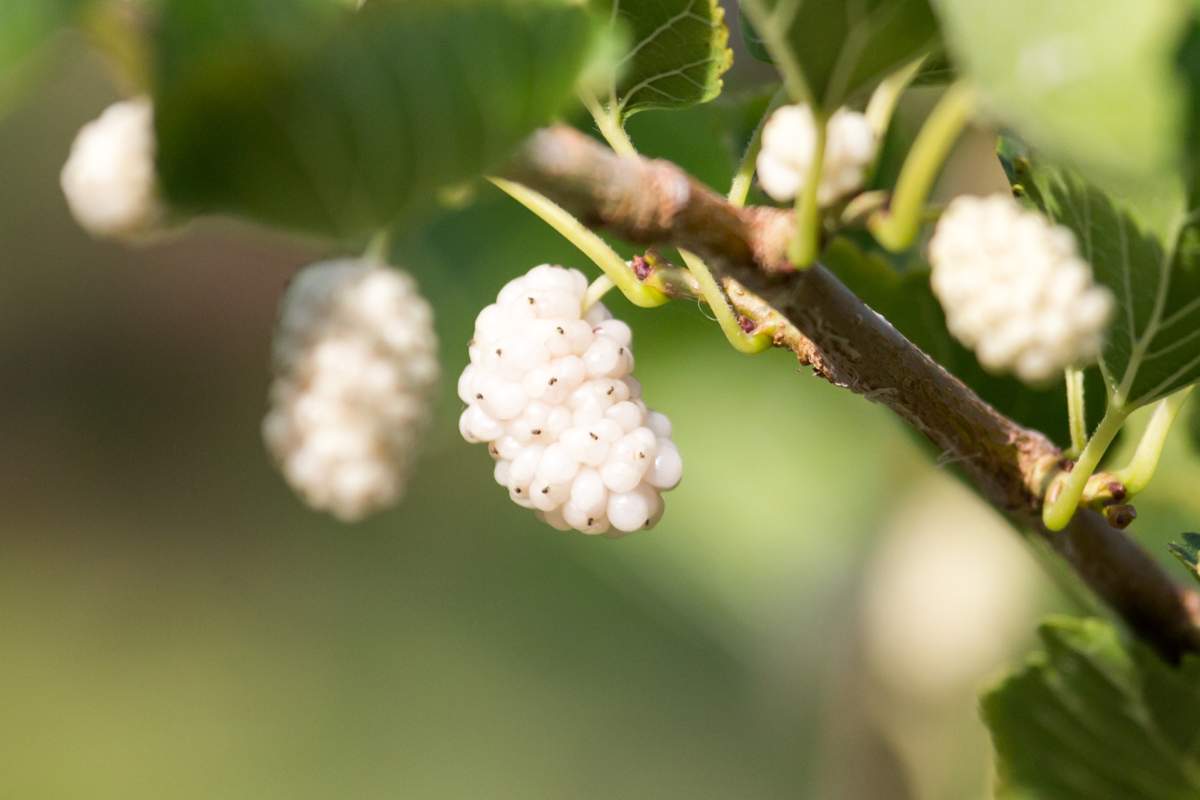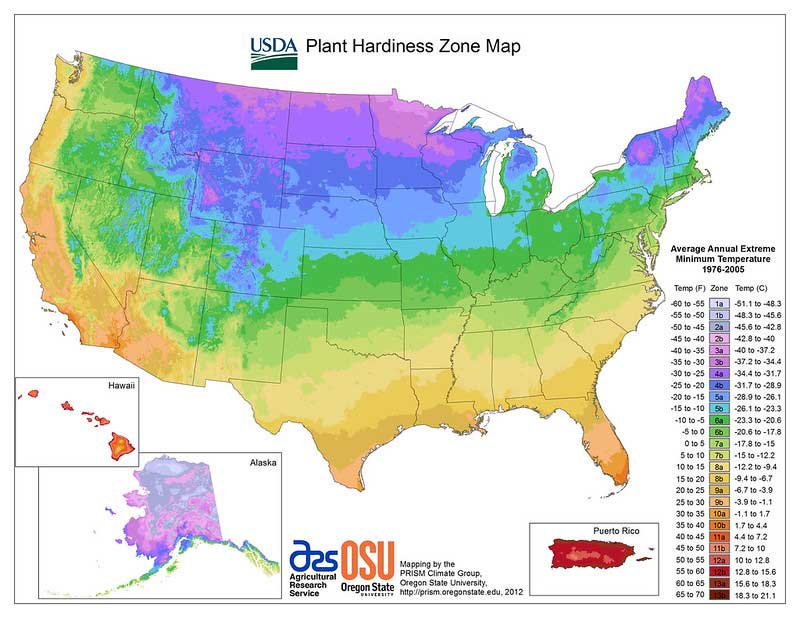Zone 8 covers much of the southeast, Texas, Southwest, and the West Coast. In this warm-weather zone, temperatures rarely descend below 10F in the winter. Fruit trees that thrive in this area need to be more heat-tolerant than in other zones.
Their growing season is extended. In some cases, it can last all the way from February into late October or even November. This article will give you an overview of 13 of the best fruit trees to plant in zone 8.
Take a moment to look at this map of the USDA’s plant hardiness growing zones. They’re separated by bands of color so that you can understand just where you are on the map.
13 Fruit Trees for Zone 8
1. Pears
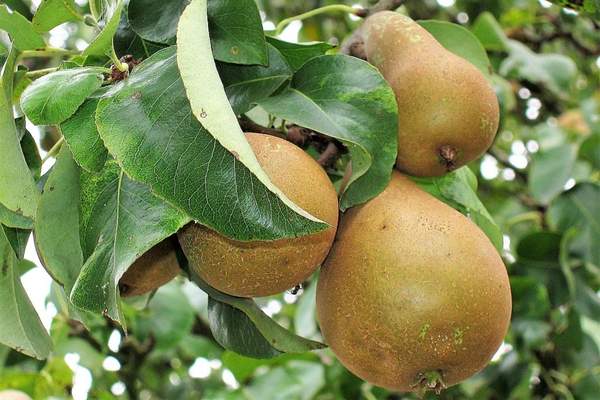
Scientific name: Pyrus communis
European pears are small-to-medium deciduous trees which can be grown to about 20 feet tall in full size orchards or 6 to 10 feet tall in smaller, espaliered garden plots. They are attractive and colorful throughout the year. Zone 8 is the southernmost zone in which pears thrive.
What’s good about this is that southern pears bear annually, while northern pears may skip a year. Make sure you guard your pear tree from intense heat – consider planting it in a breezy area with good air circulation. Allow it to experience any winter weather that does occur.
2. Apples
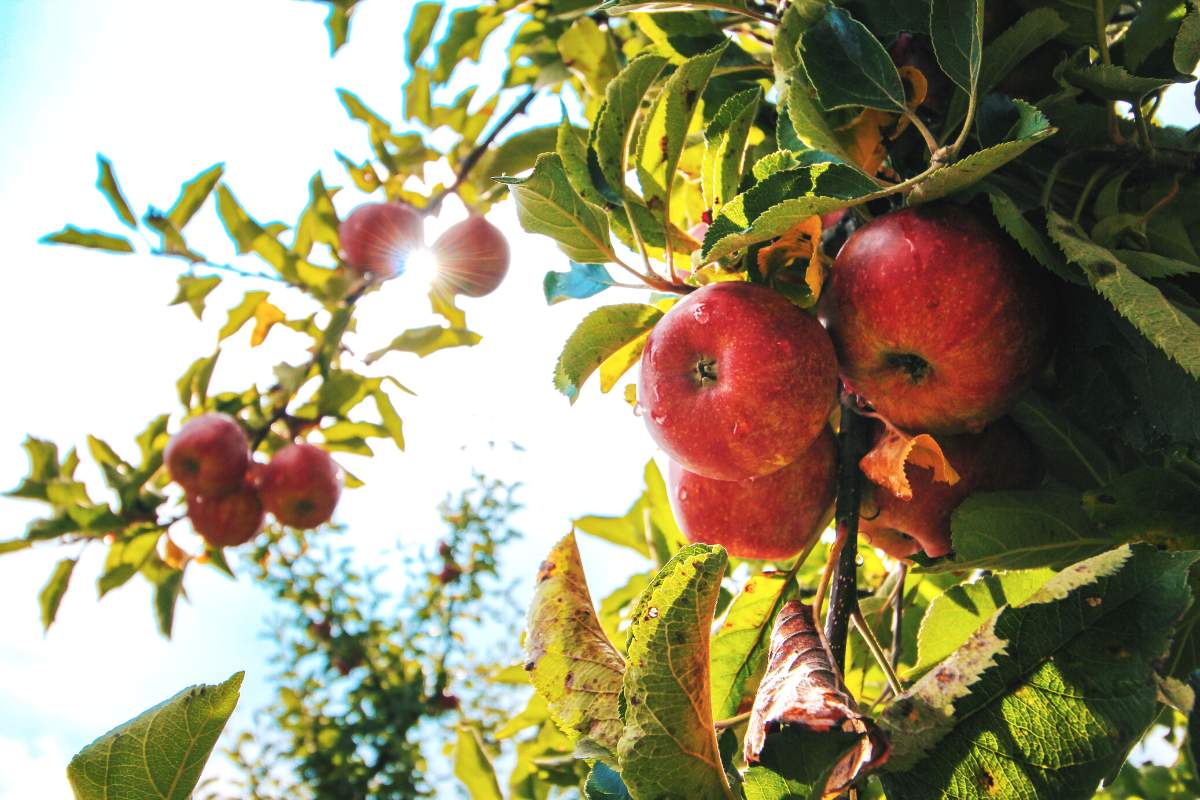
Scientific name: Malus spp.
Apples are the quintessential fruit tree. These deciduous trees come in dwarf, semi-dwarf, and full sized varieties which range in height from just 6 feet to over 35 feet tall. They need room to grow and should be planted in an area with good drainage and slightly acidic soil. Full sun is a necessity.
Apple trees have a substantial chilling requirement which may not always be met by the mild winters of zone 8. Heat-tolerant options with shorter chilling requirements include Gala, and Tropical Beauty. Gardeners in the Southwest may appreciate the desert-adapted Michal variety.
3. Persimmons
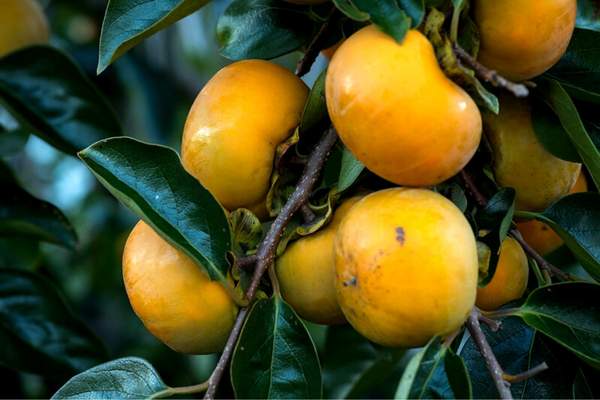
Scientific name: Diospyros virginiana
These unique fruit are a great option to grow if you’re looking to mix up the garden and add some sweet, spicy fruit to your diet. American persimmons are native to the Eastern United States, where they have grown in the wild for thousands of years.
You can grow a persimmon tree from seed, but you’ll get fruit much faster if you buy a grafted sapling, which has the best combination of rootstock and branches. They grow quickly and require little care except regular watering. Just remember that with an American persimmon, you need to plant two in order to ensure pollination.
4. Apricots
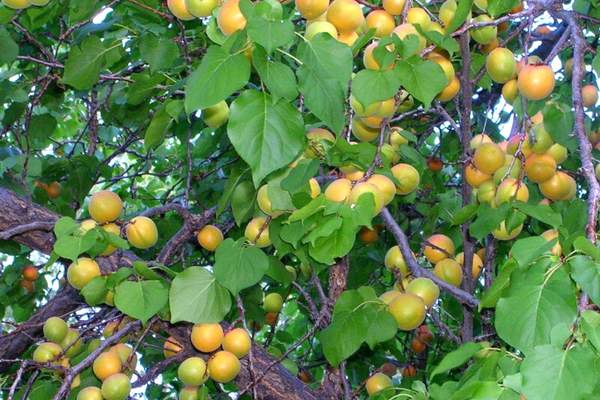
Scientific name: Prunus armeniaca
Apricots can be fussy to take care of, but they are well worth the effort, considering their high yield and delicious taste. They self-pollinate, have beautiful flowers, and grow between 10 and 18 feet tall.
Early spring frosts shouldn’t pose a risk in zone 8, but if you’re concerned, plant your apricot tree in a sunny spot where frost melts the quickest in winter. This protects the tree against freezing after it has blossomed. Make sure water doesn’t pool around its roots – there’s nothing an apricot tree hates more.
5. Japanese Plums
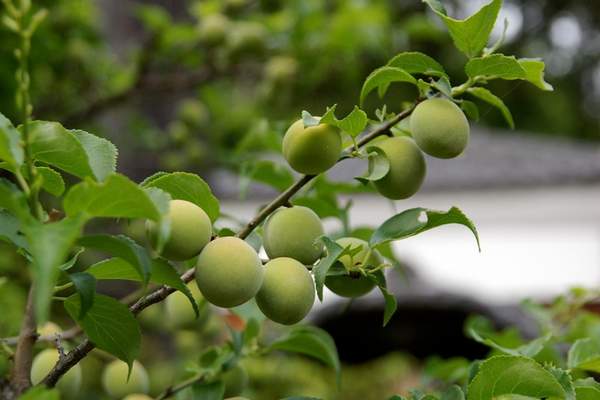
Scientific name: Prunus salicina
Growing a plum tree in zone 8 can be difficult if you don’t pick the right variety. Japanese plums handle warm temperatures better than European plums, so spring for varieties like Santa Rosa and Burbank. Don’t forget to buy two – they need to cross-pollinate!
Japanese plum trees grow best in full sun, away from cold winds. These deciduous trees are petite; they grow to a maximum of about 15 feet tall.
6. Peaches
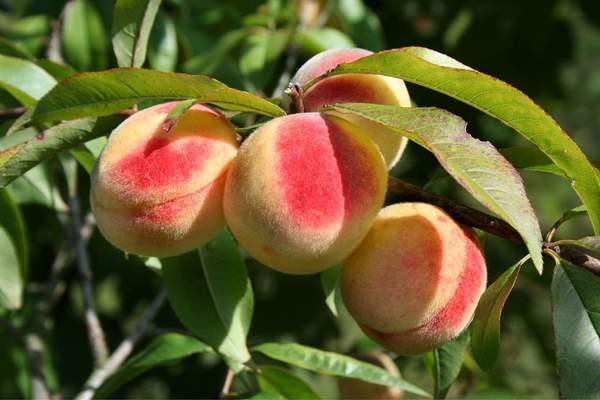
Scientific name: Prunus persica
Peach trees find themselves at home in the warm-weathered environment of zone 8 climates. Watch out for insect pests, diseases, and the risk of frost. These deciduous, pink-flowered trees self-pollinate, grow to between 15 and 30 feet tall, and should be pruned in an open form.
Peaches are ready to harvest between late April and mid-August. The variety you choose has major influence on its resistance to pests, flavor, and time of harvest. The Elberta is a good option if you live in the Southeast, while Elegant Lady is better for residents of the West.
7. Cherries
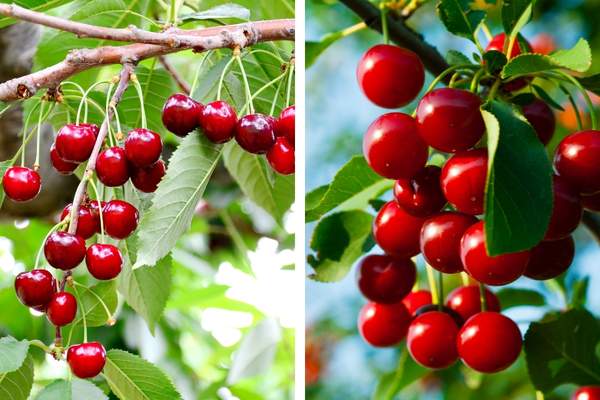
Scientific name: Prunus avium & Prunus cerasus
Cherries can be difficult to grow in the warm climates of zone 8 states because these fruit trees have a significant chilling period, along with being very vulnerable to pests and disease. If you have room for just one tree, plant sour cherries, which are self-pollinating.
It takes four years for an orchard-planted cherry tree to produce fruit. They are small trees – most measure under 12 feet tall and about 8 feet around – but they are prolific when taken care of properly. Take care to plant them in an area with well-draining soil and full sun.
8. Walnuts
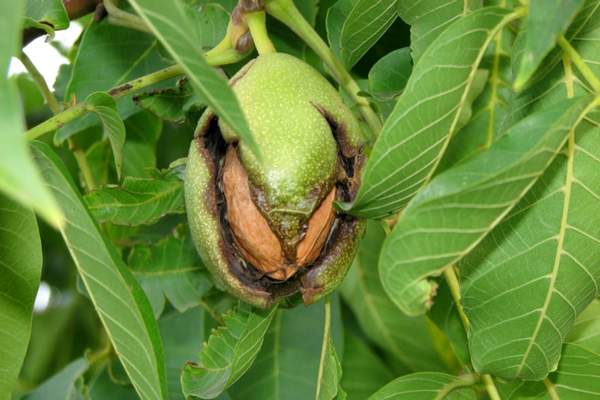
Scientific name: Juglans regia
Mix up your fruit tree orchard by planting a walnut tree. Edible walnuts are harvested from the English walnut. These deciduous trees can grow up to 50 feet tall.
They are low maintenance because they require occasional pruning and spring fertilizer application. Patience is necessary with walnuts.
It can take up to a decade before you see your first harvest. Good types to grow include the Chandler, Sunland, and Ashley varieties.
9. Mulberries
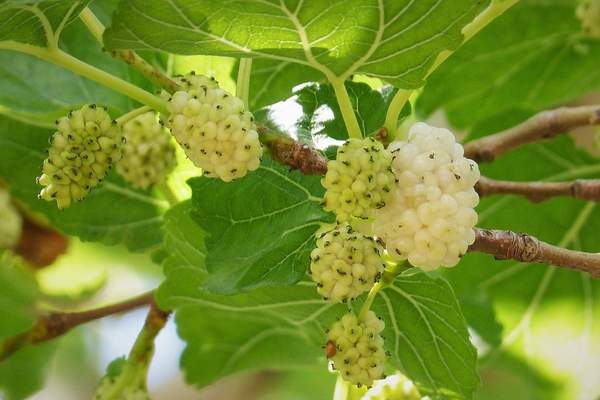
Scientific name: Morus alba
Add a mulberry tree to your yard to get some shade and delicious fruit each year. Mulberries look and taste similar to blackberries. The deciduous trees can grow over 60 feet tall, so be careful where you plant your tree.
They like full sun, well-draining soil, and are self-fertile. Prune them only if their branches make it difficult to harvest the berries.
Always remove suckers and any seedlings you see popping up. Mulberry trees can be invasive and cause allergic reactions in some during the spring.
10. Pecans
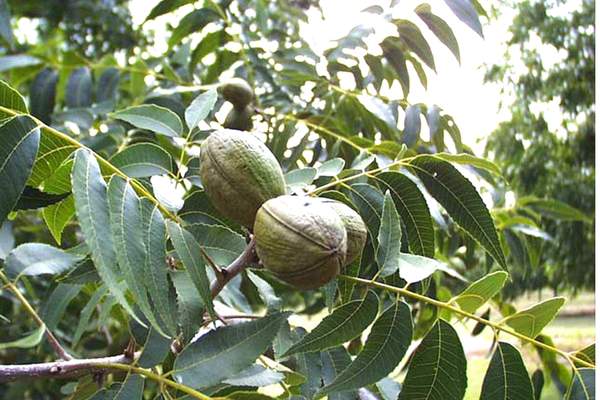
Scientific name: Carya illinoinensis
Pecan trees grow to the beat of their own drum. These deciduous trees are native to the central United States but are grown throughout the South and in Mexico. They grow over 80 feet tall, provide valuable shade, and prefer hot, humid summers.
Water is very important to ensure a bountiful harvest. Drip irrigation systems are a good investment for a pecan tree, since the soil needs to stay moist from budding until pecans are about to drop in the fall.
11. Olives
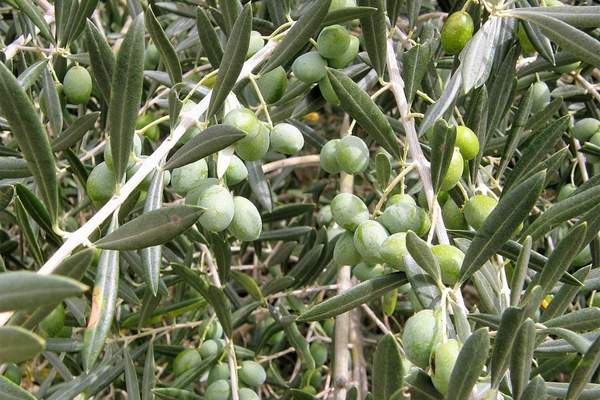
Scientific name: Olea europaea
You don’t have to live in a Tuscan villa to have your own beautiful olive tree. In fact, olive trees grow well in parts of USDA planting zone 8! Unlike other fruit trees, olive trees are evergreen and keep their leaves year-round.
Their drought tolerance makes them a good choice for dry and arid regions like California and the Southwest. Olives are harvested from August until November.
12. Lemons
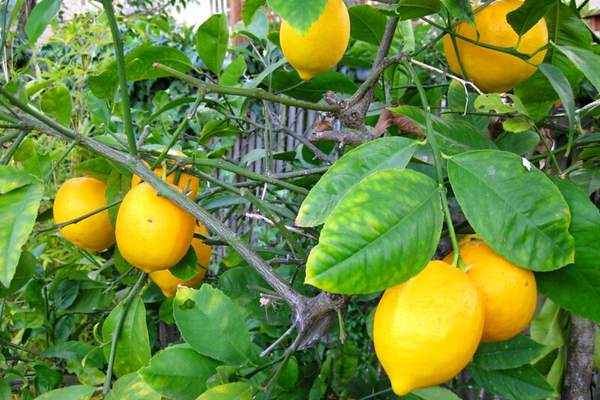
Scientific name: Citrus lemon
Homegrown lemons are dramatically different than the ones you’ll pick up at the grocery store. They grow bigger, have harder rinds, and may even have seeds. The trade-off is worth it, however, when you can simply go outside and pick a few whenever you want.
Lemons are cold-sensitive, so use your discretion as to whether you plant them in pots or directly in the ground. We recommend pots if your local area has more than a few regular frosts/freezes per winter.
Potted lemon trees still produce fruit and are easy to keep insulated from the cold. Try the dwarf Meyer Lemon variety.
13. Grapefruits
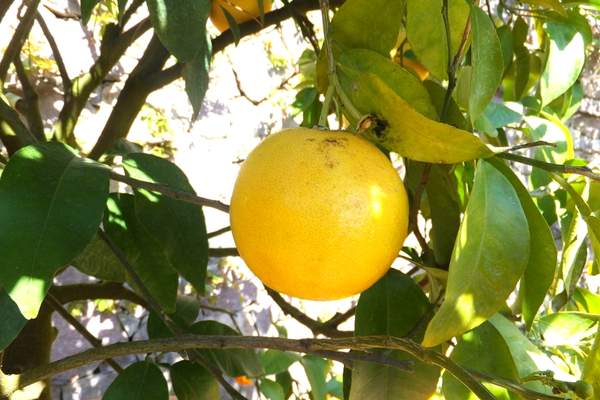
Scientific name: Citrus x paradisi
Zone 8 is the northernmost zone where you can comfortably grow citrus. You may have to cover them from the occasional frost in the winter, but you can plant your citrus trees outdoors.
Grapefruit is a good option for gardeners who are enthusiastic about citrus and are ready to wait up to a decade before they see fruit. Varieties adapted to this area are Redblush and Ruby.
